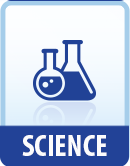|
This section contains 500 words (approx. 2 pages at 300 words per page) |

|
Cloning vectors are DNA molecules used to insert fragments of foreign DNA into a host cell. The vector still has the properties of multiplying and self-replication. These vectors introduce foreign DNA into the host cells, which then may divide in large quantities. The major cloning vectors are plasmids, cosmids, yeast artificial chromosomes (YACs), and recombinant molecules.
Plasmids are replications of DNA that appear as a circular piece outside of the chromosome. The replicon or replicating piece is stable and inherited in an extrachromosomal state, distinct from the normal bacterial genome. Under normal conditions, the plasmid is not essential for cell survival. Small pieces of DNA (from 50 to 5,000 base pairs) may be inserted. This DNA is referred to as recombinant DNA.
When the recombinant DNA is ligated or put into the plasmid vector, it then is introduced into a system, such as bacteria, that will amplify it...
|
This section contains 500 words (approx. 2 pages at 300 words per page) |

|


